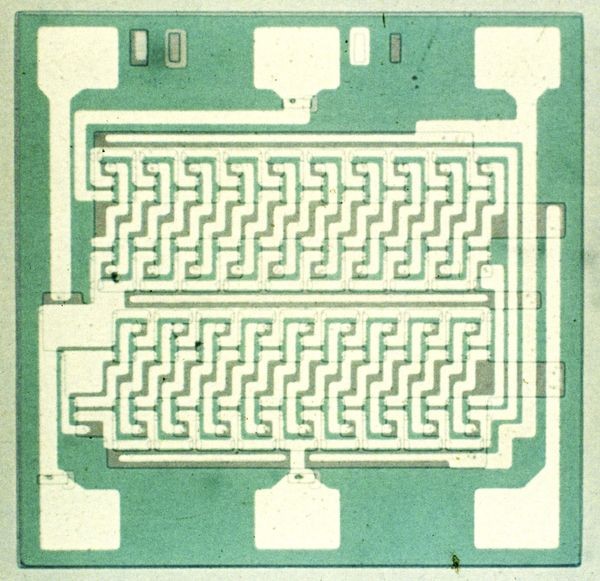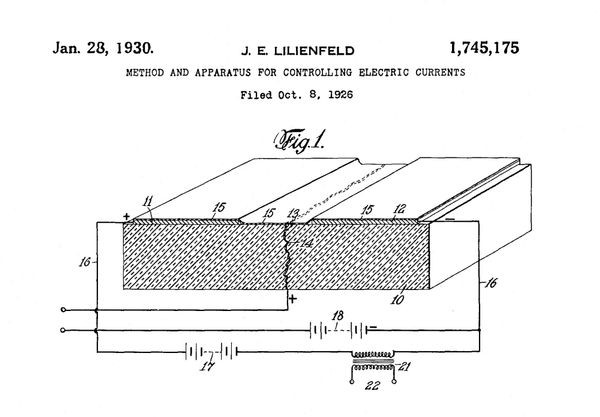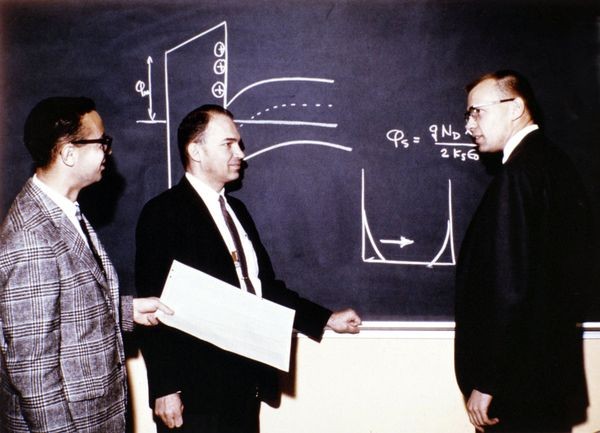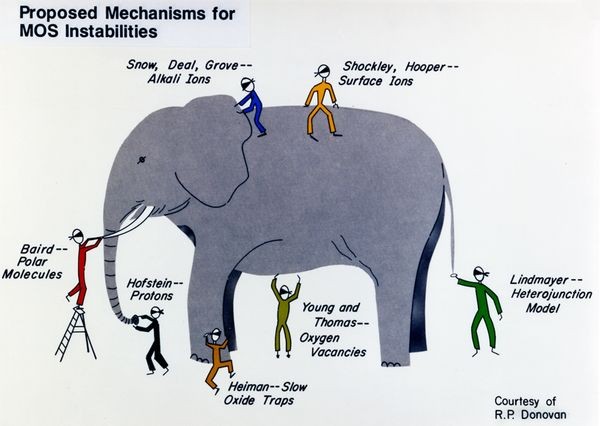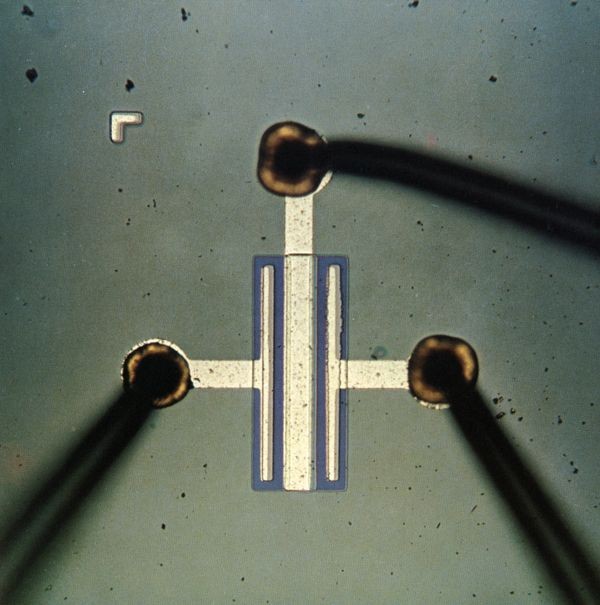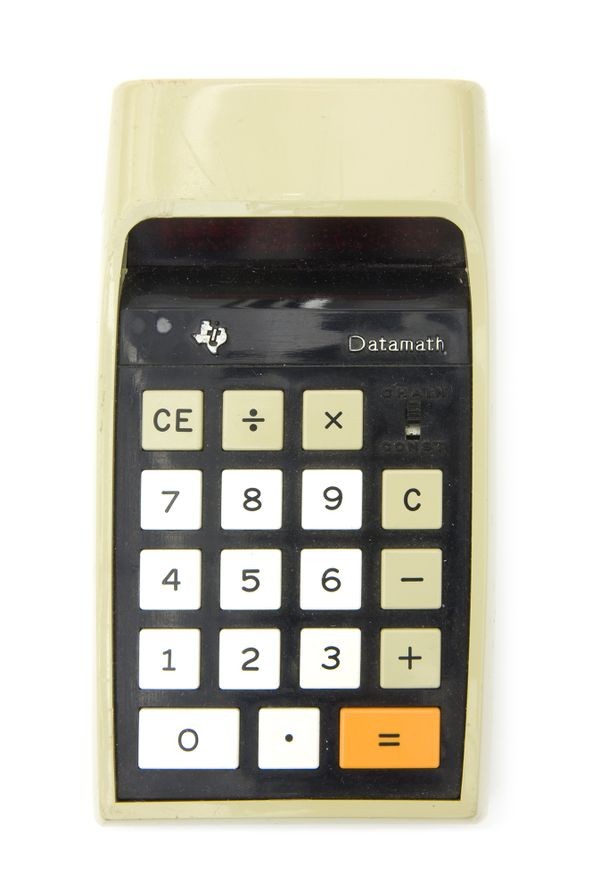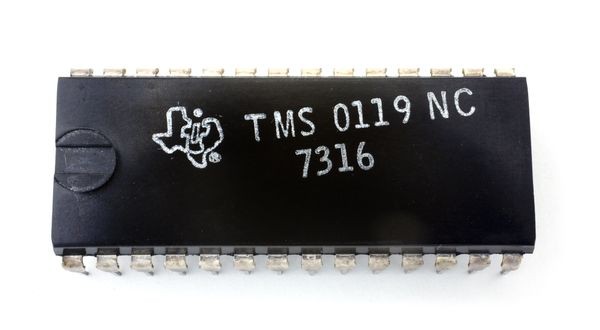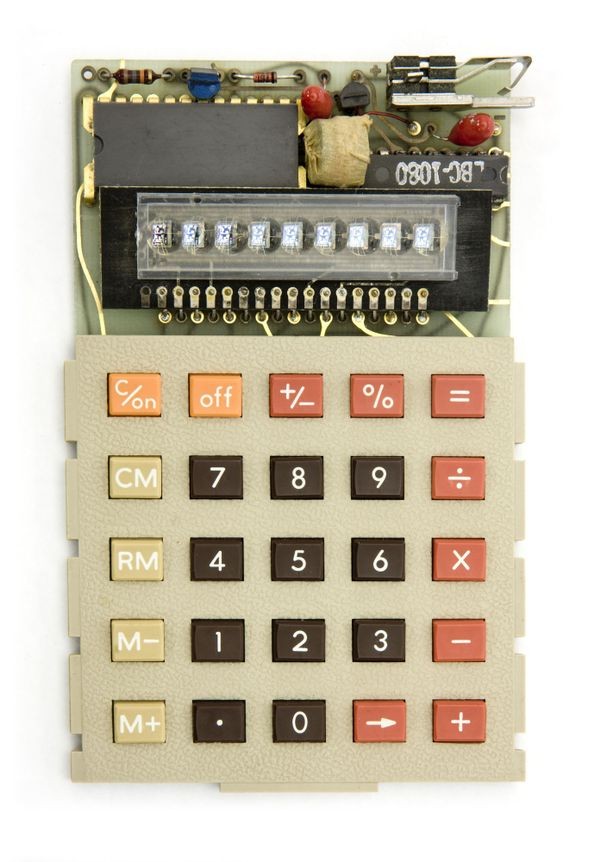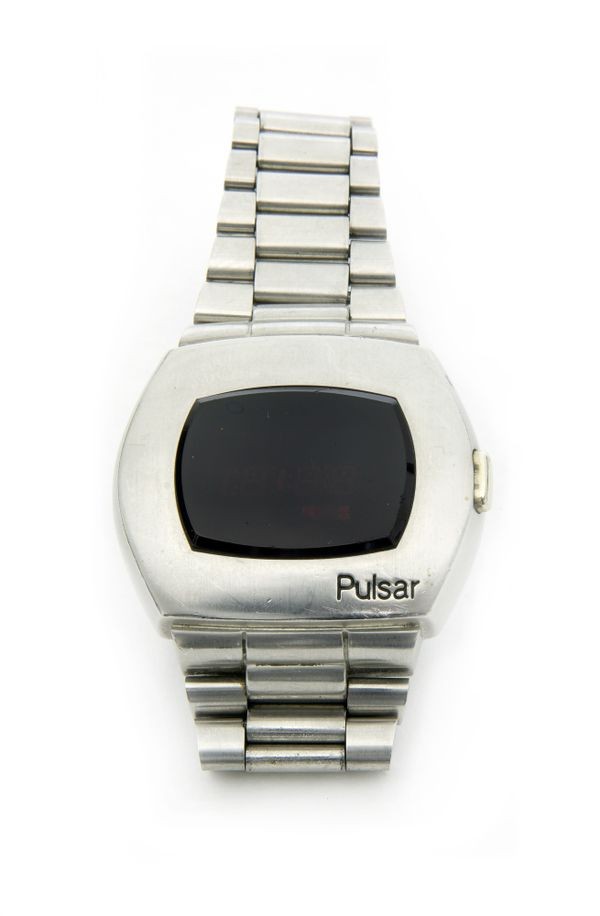Tortoise of Transistors Wins the Race
MOS shift register, 1964
This was the first commercial MOS IC: Robert Norman’s 20-bit shift register using 120 p-channel transistors.
Tortoise of Transistors Wins the Race
Engineers conceived of semiconductor amplifiers in the 1920s. Four decades later, they finally got them to work.
A simpler structure, MOS (Metal Oxide Semiconductor) promised higher density than junction transistors at lower cost and power. Technical problems delayed their use in ICs until the late 1960s, but more than 99% of today’s chips are MOS.
First transistor patent
This figure from a patent filed by Julius E. Lilienfeld in 1926 shows a three-electrode structure similar to what today would be called a field-effect transistor.
View Artifact DetailMOS technology discussion
Andy Grove, Bruce Deal, and Ed Snow made important contributions to resolving the problems with MOS at the Fairchild Palo Alto R&D laboratory.
View Artifact DetailMOS technology was considered a Cinderella of the semiconductor industry.
MOS transistor patent
This figure from a patent by Dawon Kahng of Bell Labs shows a cross section of the first working MOS field-effect transistor built in 1959.
View Artifact DetailViews on the MOS stability problem
Using the analogy of blind men touching an elephant, R. P. Donovan described the conflicting explanations for the unstable electrical characteristics that delayed the introduction of MOS ICs.
View Artifact DetailFI100 MOS transistor
The simplicity of the MOS structure is seen in this photo of the FI 100, one of the first MOS transistors sold.
View Artifact DetailThe MOS Integrated Circuit
The first ICs used bipolar transistors, so-called because both the electrons and “holes” (an electron deficit) acted as charge carriers. MOS transistors, named for their sandwich-like layers of Metal, Oxide and Semiconductor (silicon), employ only one type of carrier: either electrons or holes.
In general MOS transistors are slower than bipolar. But they are smaller, cheaper, and less power hungry. Once developed they were quickly adopted for consumer products like clocks and calculators.
The pioneering MOS manufacturers at first had trouble building reliable chips. But by the early 1970s, innovations from many companies—including Fairchild, IBM, Philips, and RCA—had fixed the reliability problems, opening the door to a new wave of start-up MOS companies such as Intel and Mostek.
“Moore’s Law” inspired manufacturing advances that continually produced faster and more complex MOS chips. And electronic design automation (EDA) tools made possible chips with hundreds of thousands, and eventually hundreds of millions, of transistors.
Experimental MOS IC
Fred Heiman and Steven Hofstein built this experimental 16-transistor integrated circuit at RCA.
View Artifact DetailDatamath 2500 calculator, TI, 1972
One of the first single-chip MOS consumer calculators, the Datamath 2500 established a new low price point of $119.95 when it was introduced in September 1972.
View Artifact DetailTMS0119 Calculator Chip, TI, 1972
TI engineer Gary Boone designed the TMS01xx series of calculator chips to be customizable during the manufacturing process in order to serve a wide variety of machines. The Datamath 2500 used the TMS0119 version.
View Artifact Detail1100 Checkmate Calculator Board, Litronix, 1971
The key semiconductor components of a 1970s consumer calculator are the MOS logic chip, bipolar LED driver, and GaAs LED display.
View Artifact DetailWatching Power Use
Reducing power use was particularly important in small, battery operated instruments or portable consumer products such as digital watches. These devices were first to use the new CMOS (Complementary MOS), which significantly cut chip power consumption.
As ICs held more transistors, low-power CMOS became the predominant technology, helping prevent overheating.
Galileo spacecraft
NASA’s Galileo mission to Jupiter used several RCA 1802 CMOS microprocessors because they had low power consumption.
View Artifact DetailDigital Watch with LCD Display, Microma Universal, circa 1973
Intel Corporation acquired pioneer digital LCD watch manufacturer Microma in 1972. Intel’s founder Gordon Moore continued to wear his Microma watch, a “$15 million mistake,” as a cautionary tale against acquiring businesses outside the company’s area of focus.
View Artifact DetailStar Wars Darth Vader musical birthday card
CMOS technology made it possible for tiny button batteries to power the sound-recording chips originally developed for telephone answering machines.
View Artifact DetailDigital Watch with LED Display, Hamilton Watch, 1970
The first widely recognized consumer product to use CMOS, the $2100 Hamilton Pulsar "Wrist Computer" digital watch, was unveiled on the Johnny Carson Show in 1970. RCA supplied the chips.
View Artifact DetailRelated Content
Learn more about the development of MOS ICs
Atalla and Kahng fabricate working MOS transistors
Frank Wanlass invents the low power CMOS configuration
General Microelectronics introduces the first commercial MOS IC
